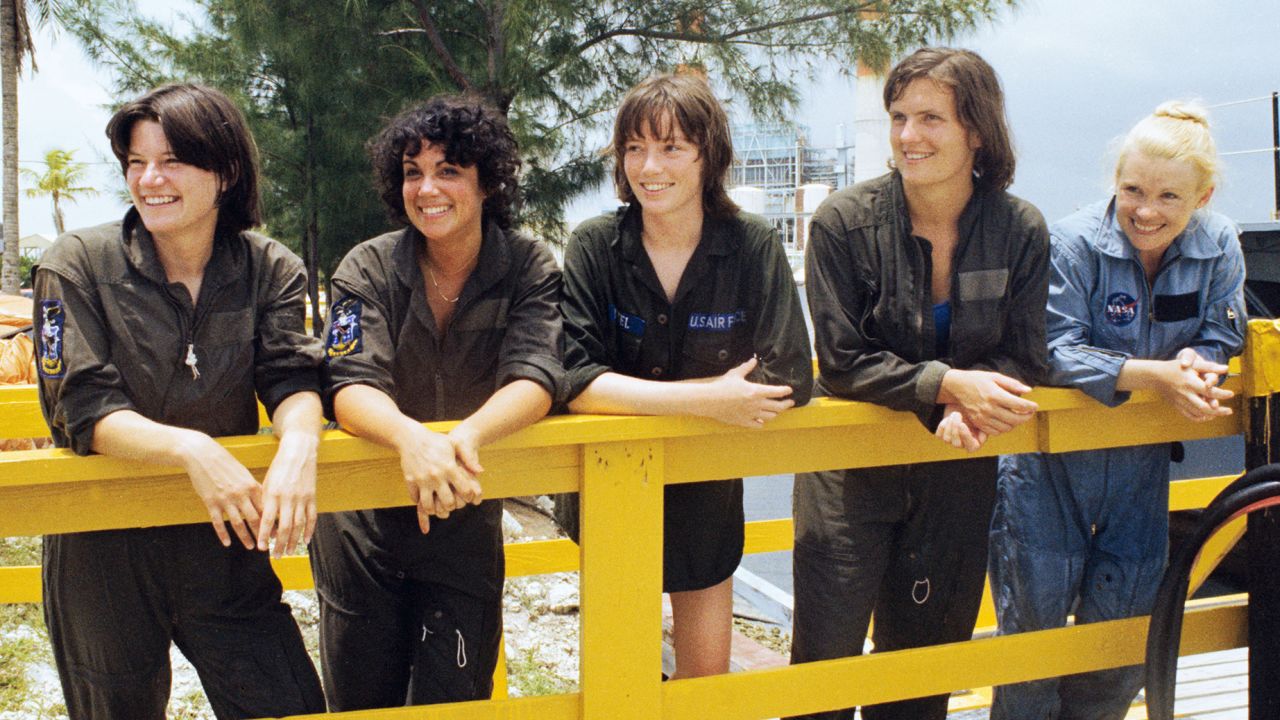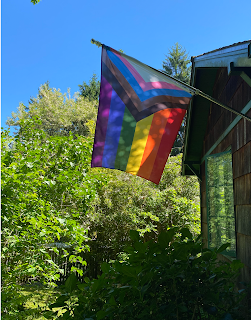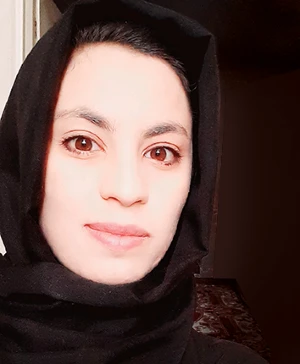AAS Committee on the Status of Women
Issue of September 15, 2023
eds: Jeremy Bailin, Nicolle Zellner, Sethanne Howard, and Hannah Jang-Condell
[We hope you all are taking care of yourselves and each other. --eds.]
This week's issues:
1. The Other Woman: At the Intersection of my Astronomical and Gender Identities
2. Meet Jane Rigby, senior project scientist for JWST and advocate for LGBTQ+ astronomers
3. Giant leap for women: early ‘lady’ astronomers have asteroids named in their honour
4. Planet Talk with Sanika Iyer
5. These highly trained scientists and doctors were making history. Reporters kept asking them sexist questions
6. 2024 NASA Heliophysics Mission Design School Applications Due October 13, 2023
7. Job Opportunities
8. How to Submit to the AASWOMEN newsletter
9. How to Subscribe or Unsubscribe to the AASWOMEN newsletter
10. Access to Past Issues
An online version of this newsletter will be available at http://womeninastronomy.blogspot.com/ at 3:00 PM ET every Friday.
1. The Other Woman: At the Intersection of my Astronomical and Gender Identities
From: Andie Vanture via womeninastronomy.blogspot.com
"As I sit here writing this it is the last weekend of Pride. At this time last year, a friend and former student asked me about the intersection of my identities as an astronomer and a transwoman. It is one of those questions that stumps you, and I was unable to drag forth an immediate answer. I have never thought of my identity as an astronomer in the same light as my identity as a transwoman. With the exception of the planets in our solar system, in particular Venus and Mars, we don’t gender astronomical objects. But astronomer is an identity as deep as one’s gender identity."
Read more at:
http://womeninastronomy.blogspot.com/2023/09/the-other-woman-at-intersection-of-my.html
Back to top.
2. Meet Jane Rigby, senior project scientist for JWST and advocate for LGBTQ+ astronomers
From: Sethanne Howard [sethanneh_at_msn.com]
By Lisa Grossman for Science News
"One of a telescope operator’s primary jobs is to keep any stray light out of the instrument. Earthly and other unwelcome photons can swamp the cosmic light from distant stars and galaxies. During more than a decade as a project scientist for the James Webb Space Telescope, Jane Rigby obsessed over minimizing light leaks — with extraordinary success. The sky looks darker to JWST than most anyone had hoped.
Rigby herself, now the senior project scientist for JWST, is a source of light."
Read more at:
https://www.sciencenews.org/article/rigby-scientist-jwst-lgbtq-astronomers
Back to top.
3. Giant leap for women: early ‘lady’ astronomers have asteroids named in their honour
From: Sethanne Howard [sethanneh_at_msn.com]
by Donna Ferguson
"They charted the stars for pitiful wages, knowing their observations about the universe would be attributed to male colleagues, and died in relative obscurity, their scientific achievements unrecognised and overlooked.
Now, in a tribute to trailblazing British female astronomers, two asteroids have been named for Annie Maunder and Alice Everett, among the first women in the world to earn a living in astronomy."
Read more at:
https://www.theguardian.com/science/2023/sep/10/giant-leap-for-women-early-lady-astronomers-have-asteroids-named-in-their-honour
Back to top.
4. Planet Talk with Sanika Iyer
From: Jeremy Bailin [jbailin_at_ua.edu]
by Sanika Iyer
"Witnessing the dazzling Neowise comet in the sky piqued my initial interest in the topic of astronomy. This phenomenon made me curious about our universe and realize how much is yet to uncover in the cosmos. Furthermore, the recent images from the James Webb Space Telescope have invigorated the study of deep sky objects and inspired me to continue my study. I began looking for opportunities to further immerse myself in this discipline and took a few introductory courses in astronomy. To capture my learnings, I started my blog, 'Planet Talk.' In this blog, I publish articles about space and earthly phenomena for my viewers to read."
Read more at:
https://awis.org/resource/planet-talk-sanika-iyer/
Back to top.
5. These highly trained scientists and doctors were making history. Reporters kept asking them sexist questions
From: Jeremy Bailin [jbailin_at_ua.edu]
By Catherine E. Shoichet, CNN
"The exchange from a news conference just a few weeks before NASA’s 1983 space shuttle Challenger launch is one of many fascinating and cringeworthy scenes unearthed and detailed by author Loren Grush in her new book, 'The Six: The Untold Stories of America’s First Women Astronauts.'"
Read more at:
https://www.cnn.com/2023/09/12/world/nasa-women-astronauts-the-six-scn-cec/index.html
Back to top.
6. 2024 NASA Heliophysics Mission Design School Applications Due October 13, 2023
From: Karly Pitman [pitman_at_SpaceScience.org]
2024 NASA Heliophysics Mission Design School Applications Due October 13, 2023
Enhance Your Early Career! NASA’s Heliophysics Mission Design School (HMDS) is a 3-month-long career development experience for Doctoral candidates (requires advancement to candidacy), Post-Docs or early career researched within 10 years of receiving their Ph.D., Junior faculty within 10 years of receiving their Ph.D. and with a continuous teaching faculty role in that period, and Non-research Engineering Master-level students within six to nine months of graduation who are not planning to pursue a Ph.D. will be considered on a space-available basis. U.S. Citizens or legal permanent residents (and a limited number of Foreign Nationals from non-designated countries) are eligible. Applicants from diverse backgrounds are particularly encouraged to apply. Diversity, equity and inclusion are important to us, and we strive to create a welcoming environment where participants’ contributions and unique perspectives are valued.
Learn the process of developing a science hypothesis-driven robotic space mission in a concurrent engineering environment, while getting an in-depth, first-hand look at mission design, life cycle, costs, schedule & the trade-offs inherent in each. A NASA Science Mission Design School, HMDS is led by Jet Propulsion Laboratory in collaboration with Goddard Space Flight Center & Applied Physics Laboratory.
2024 HMDS: Preparatory Sessions February 12 – April 19.
Culminating Week with JPL’s Team X April 22 – April 26.
Roughly equivalent in workload to a rigorous 3-hour graduate-level course, participants spend 11-12 weeks in preparatory webinars acting as a science mission team, prior to spending the final culminating week being mentored by JPL’s Advance Project Design Team, or “Team-X” to refine their science mission concept design, then present it to a mock expert review board.
An informational webinar and Q&A about HMDS will be held on Thursday, September 14, 2023, at 9:30 am PDT. We’ll describe the HMDS program, discuss tips, and learn best practices for submitting an application to this competitively-selected experience. Registration is required.
A recording will be made available for those who were unable to attend live.
To learn more & apply, visit
http://go.nasa.gov/missiondesignschools
Back to top.
7. Job Opportunities
For those interested in increasing excellence and diversity in their organizations, a list of resources and advice is here:
https://aas.org/comms/cswa/resources/Diversity#howtoincrease
- Future Faculty in the Physical Sciences Postdoctoral Fellowship at Princeton University
https://puwebp.princeton.edu/AcadHire/position/31881
- Postdoctoral research positions in Astrophysical Sciences at Princeton University
https://www.princeton.edu/acad-positions/position/31924
Back to top.
8. How to Submit to the AASWOMEN newsletter
To submit an item to the AASWOMEN newsletter, including replies to topics, send email to aaswomen_at_lists.aas.org .
All material will be posted unless you tell us otherwise, including your email address.
When submitting a job posting for inclusion in the newsletter, please include a one-line description and a link to the full job posting.
Please remember to replace "_at_" in the e-mail address above.
Back to top.
9. How to Subscribe or Unsubscribe to the AASWOMEN newsletter
Join AAS Women List through the online portal:
To Subscribe, go to https://aas.simplelists.com/aaswlist/subscribe/ and enter your name and email address, and click Subscribe. You will be sent an email with a link to click to confirm subscription.
To unsubscribe from AAS Women by email:
Go to https://aas.simplelists.com, in the "My account and unsubscriptions", type your email address. You will receive an email with a link to access your account, from there you can click the unsubscribe link for this mailing list.
Back to top.
10. Access to Past Issues
https://aas.org/comms/cswa/AASWOMEN
Each annual summary includes an index of topics covered.
Back to top.











